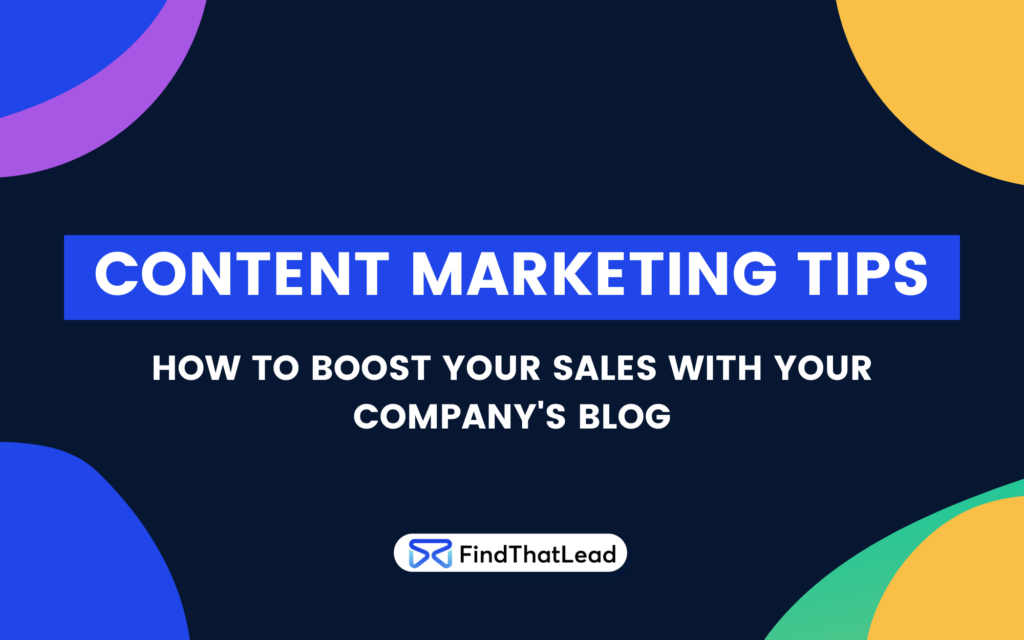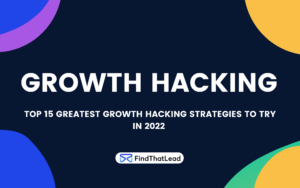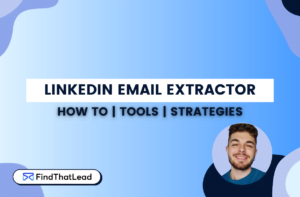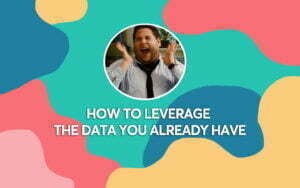We have been witnessing a surge in the popularity of visually oriented content marketing, but despite all those live streams, podcasts, and webinars, blogging is still going strong. And with good reason, since companies that blog get 55% more traffic than those that don’t.
While it’s true that the main purpose of running a blog is generating traffic and improving brand awareness, it doesn’t mean that this channel can’t boost conversions on your website.
Quite the opposite — unlike other types of content, blog posts give detailed insight into how a product or service works and showcase its benefits. Plus, SEO-optimized blog posts will rank high among search results, thus increasing your chances of landing sales-ready prospects.
Let’s discuss tips for creating blog posts that will help you sell more.
Show Readers How Easy Your Product Makes Their Lives
The best way to do this is to publish a post that shows readers how they can reach their goal or solve their problem without your product. This clever approach consists of sketching them a complex, difficult, and time-consuming process.
The trick is to play on your potential customers’ emotions by addressing their pain points and describing their life before they start using your solution. Make sure to show them all the obstacles they will have to overcome without your product.
We’re suggesting a twist on the popular before-after-bridge copywriting tactic that leverages negative marketing to evoke concern, fear, or sadness in potential customers. In the “before” part, you should build rapport with your audience and empathize with them. Then, in the “after” part, you relax the entire stressful situation by offering a solution that will transform your prospects’ reality from unpleasant into idyllic.
Such a narrative can be powerful for eliciting a response from prospects and presenting your solution as a lifesaver.
Example
Scott’s Cheap Flights has a great guide on finding cheap flights that make the most of this tactic. They list all the ways people can use to find cheap flights but highlight why each of them is complicated and ineffective. Then, as the last entry on the list, they say, “Join Scott’s Cheap Flights,” and practically offer readers a quick and easy solution. However, this isn’t your regular salesy CTA — it’s content that promotes the service in a contextually appropriate way.

Illustrate Remarkable Brand Authority
A study has shown that 90% of consumers are willing to pay more for products and services from the brands they trust.
Your blog allows you to build brand authority by showing that you have remarkable insight into a specific topic that’s aligned with your product. This, in turn, generates credibility with your prospects.
So, publishing high-quality content will help you position yourself as an expert on a particular topic and influence your prospects’ perception of your brand. It makes sense that since your content has the purpose of educating your readership and helping them solve their pain points, they need to believe you.
To convince your potential customers that you’re competent, knowledgeable, and experienced, your blog posts must be incredibly detailed. They should be packed with research and examples — ideally, your own.
Besides that, think about earning references from other experts in the industry that are already established. This can be an influencer who will share your blog post with their audience or earned media. By getting this kind of promotion, your and your brand’s name will be associated with trustworthy sources, thus lending you credibility.
It’s worth mentioning that expert content has to be grammatically correct, professionally designed, and easily readable. Typos, material mistakes, and sloppy grammar give off a bad vibe and erode your credibility.
Example
Backlinko’s “Video Marketing: The Definitive Guide (2022)” is a great example of a super in-depth blog post that covers the topic from A to Z and provides lots of their own examples, stats, and study results. Metric comparisons show how their traffic increased over the years, thanks to the changes they made to their videos. So, every tip in the blog post has been backed by the author’s own experience. All this is the reason the Backlinko blog exudes authority and trust.

Cater to Shoppers in the Decision Stage
In the decision stage of the buyer’s journey, your potential customer has already identified pain points and learned about different available solutions. They’re weighing different options, and your product or service is among them.
So, decision-stage content has the purpose of setting you apart from other competitors, dealing with potential objections, and overcoming customer hesitation.
Since your potential customers are purchase-ready, the blog posts you serve them at this point have to be very detailed, objective, and value-packed. Plus, since your goal is to sell, including strategically placed CTAs is more than welcome, as this way, you’ll create a frictionless customer experience.
Example
Each Night’s post on the best mattresses is an example of a great post that caters to shoppers in this stage. It’s a lengthy but well-organized piece that groups mattresses into 16 different categories and picks the best one in each.
The introductory part features jump links for faster access to each individual product. This way, potential customers can pick the category they’re interested in without having to go through the entire blog post searching for the product that best fits their needs.
There’s also a short overview of each product, highlighting its most important features and benefits, as well as pros and cons so shoppers can compare the information. Finally, the guide has been written by a certified sleep coach and medically reviewed by a physical therapy expert. All of this adds a layer of objectivity and expertise.

Tell Customer Stories
89% of people read customer reviews before making a purchasing decision. This stat illustrates the power of social proof in sales and marketing. The truth is that consumers are more likely to trust their peers, even if they’re strangers, over advertising and brand messaging.
It’s clear you need to offer some third-party proof about the quality and effectiveness of your product or service. Apart from customer reviews, testimonials, social shares, and referrals, it’s essential to include case studies in your content marketing strategy.
A case study showcases how your product or service helped a particular client solve their pain points, thus demonstrating its value in a convincing manner. This content format is data-driven and provides a detailed account of how your solution contributed to your customer’s success.
To ensure a case study resonates with your prospects, it’s essential to include both quantitative and qualitative results the existing customer achieved with your help.
Talk in terms of revenue, cost reduction, time-saving, and, generally speaking, improving processes and outcomes.
Real numbers work exceptionally well for painting a picture of measurable success, especially if you present them via charts and graphs.
In other words, instead of stating that you helped your customer grow their website traffic by 150%, it’s much better and more accurate to be specific and say that the number of their website visits went from 30,000 to 60,000.
Case studies are an indispensable conversion tool in the B2B industry since the buyer’s journey is longer and much more complex than in its B2C counterpart. According to 77% of B2B buyers describe their latest purchase as difficult. The reason for this is the complexity of the solutions themselves and large buying committees consisting of 6-10 people involved in decision-making.
Having a factual case study that’s focused on people with specific pain points and their experiences using your solution sans advertising lingo will eliminate any indecisiveness potential customers might have.
Example
HubSpot’s case study featuring Handled is a great example of how this type of content should be structured. It includes a video that sets the context by explaining the company’s mission, pain points, and goals. After this intro, it was easy to work Hubspot into the narrative and align its features with what the customer wanted to improve and achieve. By highlighting that Handled expanded from 0 to 121 locations in 18 months with the help of Hubspot, the case study sparks the potential customers’ interest.

Align CTAs With the Content Topic
There’s no conversion without a call to action.
Even if you’re obviously talking about how your product or service can effectively solve a particular problem your readers have, you need to tell them what their next step should be. You can’t expect them to click back and forth across your website in search of the product page.
However, the CTA copy makes all the difference, so it’s important to make it relevant.
When including a conversion CTA on your blog page, try to align its copy with the content of the blog post.
This makes a conversion more likely because you’re capitalizing on your reader’s interest. If you just use a generic CTA like “Subscribe,” then you’re not connecting it with your value proposition. The reader decides to read a particular blog post because it addresses their pain point and discusses potential solutions. A high-converting CTA reflects this, and it should illustrate what your product or service can help the reader achieve and invite them to take action.
Example
January AI’s post on metabolic health is intended to educate website visitors on the topic. They understand that a visitor who lands on this page wants to find as much as possible about metabolic health, so the CTA on this page references their intent and how clicking on it will benefit them.

Create a Market for Your Product
Before having a chance to persuade your prospects to make a decision in favor of your product or service, you first have to help them realize they have a problem and let them know that it can be solved.
This is the beginning of their buyer’s journey and relationship with your brand, which is why it needs all your attention.
Given that your new prospects will become aware of their problem during this stage, they’re not sure they need a solution yet. So, don’t try to sell them anything at this point because you’ll only scare them off. The only thing they want is to understand the problem better and scratch the surface when it comes to a possible solution.
Awareness-stage blog posts don’t have a solid sales or conversion focus. You shouldn’t be discussing the details of your product, its features, or even pricing. The best approach is to justify the existence of your solution by focusing on the pain points it solves and its general benefits.
Example
Affinda’s blog post “Automate Your Workflow with an Invoice Processing API” does an excellent job generating demand for their product. It starts by addressing some of the biggest challenges AP departments are struggling with and then introduces a broad solution without mentioning their product. This way, potential customers aren’t ambushed with a sales pitch but subtly directed toward exploring the solution.

Final Thoughts
Blogging can help you attract traffic to your website, build meaningful relationships with your audience, and position yourself as an industry thought leader. But you can also use your company’s blog as a powerful sales tool. Although other channels and types of content are favored over it for boosting conversions, a carefully planned and executed blog will also bring you lots of business opportunities and customers. The tips we discussed will allow you to capitalize on your blogging efforts.





 BONUS:
BONUS: The Challenge: Join this free course and I guarantee that after 5 days you will have the necessary skills to start generating B2B clients Growth Hacking and Prospecting techniques.
The Challenge: Join this free course and I guarantee that after 5 days you will have the necessary skills to start generating B2B clients Growth Hacking and Prospecting techniques.
One Response
We think Content marketing is the basis of a good inbound marketing strategy